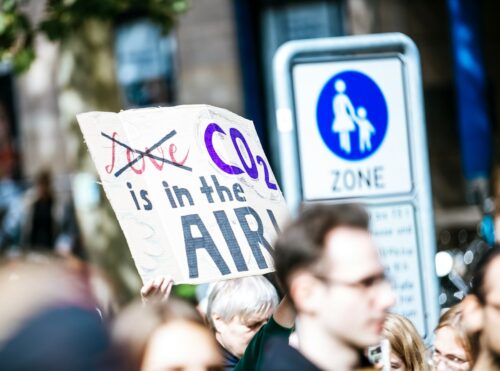 Fire potential for internal combustion engine (ICE) vehicle…
Fire potential for internal combustion engine (ICE) vehicle…
The potential for fire in an internal combustion engine vehicle largely depends on the fuel type and the conditions under which it’s exposed.
Let’s break down the combustion potential for gasoline (petrol) and diesel fuels [emphasis, links added]:
- Gasoline (Petrol) in ICE Vehicles:
- Volatility: Gasoline is a relatively volatile fuel, which means it can easily vaporize. For combustion to occur, the fuel must be in a vapor state. The vapor-air mixture then becomes combustible within a certain range.
- Flammable Range: For gasoline, this flammable range is approximately 1.4% to 7.6% by volume of gasoline vapor in the air.
- Gasoline Tanks: While liquid gasoline itself isn’t directly ignitable, its vapors are. A significant threat can be a situation where gasoline vapor is allowed to accumulate in an enclosed space and then encounters an ignition source.
- Diesel in ICE Vehicles:
- Volatility: Diesel is less volatile than gasoline. This means it doesn’t vaporize as easily, which is why diesel engines use compression to ignite the fuel instead of a spark.
- Flammable Range: Diesel has a narrower flammable range in the air compared to gasoline.
- Diesel Tanks: Due to its higher ignition temperature and lower volatility, diesel is generally considered safer from the perspective of unintended ignition compared to gasoline. However, in the right conditions (e.g., a mist or finely atomized spray), it can still ignite.
Gasoline and diesel tanks on vehicles are designed with safety in mind. They are typically constructed to resist rupture in the event of a collision. Modern vehicles also incorporate features like check valves to prevent fuel spillage if the vehicle rolls over.
In summary, both gasoline and diesel have the potential to ignite, but under different conditions. Gasoline is generally more prone to unintended ignition due to its volatility, while diesel, because of its higher ignition temperature and lower volatility, is less so.
Fire potential for electric vehicles (EVs)…
Electric vehicles (EVs) don’t use combustible fuels like gasoline or diesel, so they don’t have a “fire potential” in the traditional sense. However, there are other safety concerns associated with EVs, primarily related to their batteries:
- Lithium-ion Batteries:
- Most modern EVs use lithium-ion batteries due to their high energy density and efficiency. While these batteries are generally safe, they can pose a fire risk under certain conditions.
- Thermal Runaway: This is a self-sustaining reaction that can occur if a cell in the battery becomes damaged or defective. Once one cell goes into thermal runaway, it can produce heat that causes adjacent cells to also go into thermal runaway, creating a cascading effect. This can lead to a fire or even an explosion.
- Overcharging: If a battery is charged beyond its safe limit, it can cause the battery to become unstable and could lead to thermal runaway.
- Physical Damage: Physical damage to the battery, whether from a collision, puncture, or other forms of trauma, can lead to internal short circuits which might result in thermal runaway.
- Battery Management Systems (BMS):
- Modern EVs are equipped with advanced BMSs that monitor the health, temperature, and state of charge of the battery. These systems help prevent overcharging and manage the cooling of the battery to prevent overheating.
- Failures or defects in the BMS could potentially lead to unsafe conditions.
- Other Combustion Potential:
- While the primary concern with EVs is the battery, other components in the vehicle could pose a fire risk, such as electrical systems or components, although these risks are generally comparable to or less than those found in traditional ICE vehicles.
Manufacturers of EVs invest heavily in safety measures to prevent battery-related incidents. This includes protective casings, cooling systems, and software controls.
However, in the event of an accident, are emergency responders trained to deal with potential risks associated with EV batteries?
Comparing ICE and EV fire potential…
Comparing the fire potential and fire intensity of an Electric Vehicle (EV) and an Internal Combustion Engine (ICE) vehicle requires examining a variety of factors:
- Combustion Potential:
- EV: The primary combustion potential in EVs lies with the batteries. Lithium-ion batteries can undergo a process called thermal runaway if they’re damaged, defective, or subjected to extreme conditions. This can lead to intense fires.
- ICE: The combustion potential in ICE vehicles lies with the fuel. Gasoline is volatile and can easily form a combustible mixture with air. Diesel is less volatile but can still ignite under certain conditions.
- Onset of Fire:
- EV: Fires in EVs, especially those due to battery issues, can be slower to start. Thermal runaway might begin in one cell and can spread to others, but this process might not be immediate.
- ICE: Fires, especially those resulting from fuel leaks in accidents, can ignite rapidly if an ignition source is present.
- Fire Intensity:
- EV: Battery fires can be intense and difficult to extinguish. In certain conditions, battery fires can reignite even after they seem to have been put out.
- ICE: Gasoline fires can also be intense, especially if there’s a significant amount of fuel involved. Diesel fires are less intense than gasoline fires but can still be formidable.
- Extinguishing the Fire:
- EV: Battery fires require large amounts of water or specific types of extinguishers to cool down the batteries and prevent the spread of thermal runaway to other cells. There’s also the challenge of potential reignition.
- ICE: Gasoline and diesel fires can typically be extinguished using regular firefighting foam or dry chemical extinguishers.
- Toxicity and Environmental Impact:
- EV: Battery fires can release toxic fumes, including harmful metals and chemicals. The environmental impact can also be significant if the remnants of the battery enter the ecosystem.
- ICE: Burning gasoline or diesel releases carbon monoxide, hydrocarbons, and other pollutants. Spilled or leaked fuels can also contaminate the environment.
In conclusion, both EVs and ICE vehicles present risks of fire, but the nature, intensity, and potential causes of these fires differ.
ICE fires, particularly those involving gasoline, tend to be less intense, whereas EV battery fires might develop more slowly but can be more intense and more challenging to extinguish.
Luton Airport fire…
On October 11, 2023, around 9:00 PM local time, Luton Airport’s new parking garage experienced a fire. The blaze rapidly moved through the facility, leading to a partial structural collapse.
Consequently, the airport halted all flight operations until at least 3:00 PM the following day, with firefighters actively combating the fire.

Initial investigations suggest the fire accidentally started in a parked car, with conflicting reports if the car was an EV or an ICE. Bedfordshire Fire and Rescue Service chief fire officer, Andrew Hopkinson stated:
We don’t believe it was an electric vehicle. It’s believed to be diesel-powered, at this stage all subject to verification. And then that fire has quickly and rapidly spread.
Approximately 1,200 vehicles were destroyed in the inferno, and several firefighters required hospitalization. …
Although the initial reports—which need verification—state this as a diesel-powered vehicle, the video obtained appears to show a Land Rover Evoque.
The fire appears to be concentrated under the driver-side of the vehicle. When looking at a schematic of the Evoque, this is where the 48V lithium-ion battery resides.
Although the cause of the fire at Luton Airport remains under investigation, the intensity and rapid spread of the blaze suggest that the thermal runaway of EV batteries played a major role.
What is the fire potential of backing up the electricity grid with even larger lithium-ion batteries?
Read more at Irrational Fear




















Just imagine a Apartment complex with only EV,s in its Underground parking then they catch fire and we have a fire far more deadly then the Coconut Grove Fire
Aha, so it was probaly everything it was claimed AND appeared to be, then?
A Hybrid Evoque with a diesel ICE, so they can call it a diesel but the electric bit was what caught fire, then. Need Poirot to figure this shit out. Just get the chassis/VIN number for crissakes….
As a physicist/engineer I have never throught EVs a good idea on any joined up engineering or practical basis. BUT I was persuaded by the overtly superior energy use of hybrids…………. until now…..
One report said it started in a single vehicle – two fire tenders got to it – but the fire still spread ?
I have personally watched the fire brigade extinguish two ICE vehicle fires and one fairly large flammable stores (50 x 200l drums of thinners involved) and in each case, once they hit it with foam and water spray the fire was out in seconds.
What happened here that they couldn’t control it – sounds suspiciously like an EV fire to me.